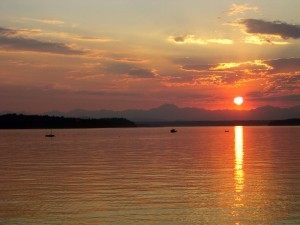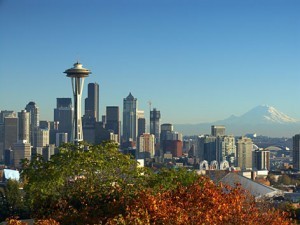Rolf Potts's Blog, page 76
November 15, 2012
Prepare for Cultural Challenges in Asia
Vagablogging :: Rolf Potts Vagabonding Blog

Photo Credit: Flickr/Instant Vantage
I came across an interesting article on making the right first impression in Asia. The author goes through a number of countries, from Japan to South Korea, Thailand and India, giving a few suggestions on giving that important, successful first impression, party starter, or whatever you want to call it.
Because indeed, traveling in countries with particular and exclusive cultures as you may find in Asia, you need to do a bit of background work to get started right and enjoy your traveling to the max.
A couple weeks ago I published a similar post on Vagabonding, receiving a number of different angry comments as I colorfully criticized foreign backpackers for their disrespectful behavior upon entering Malaysia, a multicultural, albeit predominantly Muslim nation. I am far from taking up the matter again, but I would like to stress it once more: as a long term resident in several Asian countries, I have to agree with the article’s author. Making a first impression in Asia requires “some grueling firsthand experience”. For example, when I was a language teacher in China, it took me quite a while to understand how to fulfill the stereotypical requirements my employer had about white foreigners… including being tacitly accused of an “insatiable sexual appetite towards anything that moves”!!! Thus, in order to come home with a better travel experience and an increased knowledge of the country, try to make an effort and make some research before you embark on an Asian adventure; for example, once in Thailand, do not mistake their smile for a complacent show of appreciation for your “farangness”. Know your people, and you will have extremely better experiences in their exotic Asian territories. And as biased as it may sound, make true lasting friendships.
If you have traveled or lived in Asia before, what do you think?
Original article can be found here: Prepare for Cultural Challenges in Asia
November 12, 2012
Health issues on the road
Vagablogging :: Rolf Potts Vagabonding Blog
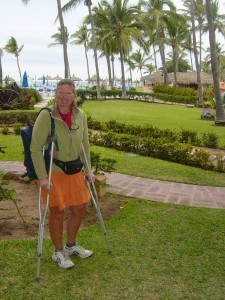 I was talking with a friend the other day when she blurted out her biggest fear of traveling abroad. “What about medical issues? What do you do when something happens overseas?”
I was talking with a friend the other day when she blurted out her biggest fear of traveling abroad. “What about medical issues? What do you do when something happens overseas?”
And I responded, “I go the hospital. They have doctors overseas too.”
Medical concerns are a huge issue for sure. Nobody wants to face the possibility of a serious injury with no access to medical facilities.
I’ll let you in on a little secret: they have doctors and hospitals overseas too. If people live there, there will be medical facilities – and many times, they’ll be better and cheaper than what you would find in the good ol’ US of A.
We’ve dealt with quite a few health crisis throughout the years. I broke my hand in Egypt, my son broke his arm in Malaysia. He suffered from pneumonia in Malaysia as well, while I waited until we got to Argentina to get it. My husband’s heart went into arrhythmia and he had to be evacuated to Israel in an air ambulance. We’ve sought out clinics in dozens of countries around the globe for various maladies and always managed to find a doctor. Always.
In fact, I would even go so far as to say that many times I’ve gotten better care abroad than I would have at home. In Mexico a knee specialist came in to his office on Sunday solely to see me when my knee suddenly erupted into severe pain. I was sitting in front of a neurologist in Taiwan 45 minutes after my head exploded with an excruciating headache. An MRI in Malaysia can be scheduled within hours rather than the weeks or months it takes in the USA.
Is it scary to deal with health issues far away from family and friends? You bet. It’s scary at home too, but having that support system in place makes it a bit more bearable.
But don’t fear medical issues while traveling because of a lack of facilities. Because… well, that’s not the way it is.
Original article can be found here: Health issues on the road
Do you prefer hostels or hotels?
Vagablogging :: Rolf Potts Vagabonding Blog
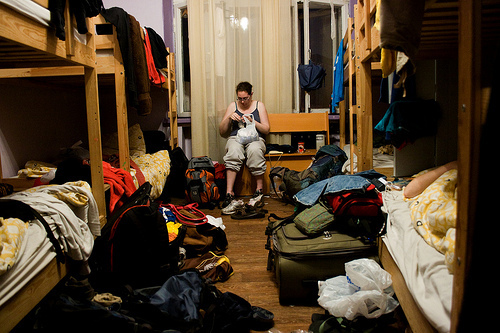
A girl in a hostel dorm room. Photo: Katie Brady / Flickr
Travis at the frequent-flyer blog Extra Pack of Peanuts had a post titled, Why Hostels Are Better Than Hotels. Among other reasons, he waxed poetic on the benefits of the local touch and community atmosphere. Many hostels are owned and operated by locals, so you get a more intimate feel than you would at a chain hotel. As for community, most hostels are set up to encourage interaction between guests. You might strike up a conversation while watching TV or sipping tea on the rooftop.
He helpfully includes photos and names of his favorite hostels around the world. Note: the hostel he recommends for Kuala Lumpur, Malaysia–Rainforest B&B–is out of business. I stayed there the first time I visited KL in 2008 and thought it was fantastic. Huge and had the fun feel of a jungle lodge. Last I heard, the owner was planning to open a new hostel.
The No. 1 reason I continue to stay in hostels it to meet people. I can’t adequately describe how much richer my travels were because of the people I met along the way.
Why do you stay in hostels? Please share your thoughts in the comments.
Original article can be found here: Do you prefer hostels or hotels?
November 11, 2012
Travel is a quest for difference (which makes it odd when we don’t find it)
Vagablogging :: Rolf Potts Vagabonding Blog
“All travel is to some extent the quest for difference, and the more different (or exotic, or wild) a place is, the better. That is why we get annoyed when we go camping only to find the woods full of yahoos with radios and coolers of beer, and why it can be a bit depressing to fly halfway around the world only to see the people there wearing the same brands, eating at the same franchises, and listening to the same music as we get back home.”
–Andrew Potter, The Authenticity Hoax: How We Get Lost Finding Ourselves (2010)
(2010)
Original article can be found here: Travel is a quest for difference (which makes it odd when we don’t find it)
November 9, 2012
Special November 2012 fares for multi-stop tickets on BootsnAll
Vagablogging :: Rolf Potts Vagabonding Blog
We’ve written about the Round the World Ticket Report on Vagablogging before – once back in March when we published the first version, and then again in June when we published version 2. One thing we like to do at BootsnAll is to continue learning about the trends in long-term, round the world travel, so the minute we finished version 2 in June we began working on the next installment, which just went live a couple days ago.
Version 2.1 is actually an addendum to June’s report. We knew since we started doing research on round the world flights vs. buy as you go that there was a flaw when searching the DIY (do it yourself) one-way ticket option. The way we searched the one-way flights was to simply search each leg, which we did over the course of a day or two. But this didn’t accurately portray what this option would actually cost a traveler who was on the road.
For those travelers who choose this option of traveling around the world, they do so to have the ultimate flexibility, so they are most likely not going to be searching and buying their tickets up front as we searched. For this version we tried to simulate this flight option by pricing flights on the original search date back in April 2012, then again 6 weeks, 1 month, 2 weeks, and each day the final week prior to the flight. There are trends that developed, and all results can be found in this new version of the report, added at the end as an addendum to version 2.
Download the free Around the World Airfare Report to read about our findings.
If you are ready to hit the road, then check out these five fares that we’ve found on Indie, BootsnAll’s Multi-Stop Trip Planner:
RTW from San Francisco – $4582 - San Francisco > Sydney > Denpasar (Bali) > Kuala Lumpur >overland> Bangkok > Delhi > Istanbul > Athens > Rome > San Francisco - $4582 taxes and fees included
Circle Pacific from Canada – $3551 – Vancouver > Anchorage > Tokyo > Hanoi >overland> Bangkok > Auckland > Vancouver from $3551 taxes and fees included
Circumnavigate the Globe from London – $3549 – London > Amman > Bangkok > Tokyo > Seattle >overland> Los Angeles > London from $3549 taxes and fees included
After Summer Escape from Sydney – $3394 – Sydney > Manila > Seoul > Cape Town > Sydney from $3394taxes and fees included
Round Asia from Cairo – $2499 – Cairo > Goa >overland> Mumbai > Delhi > Kathmandu > Bangkok >overland> Phom Penh > Vientiane >overland> Hanoi > Guilin > Cairo from $2499 taxes and fees included
If you are looking for something a little different in your round the world trip, then start planning your trip of a lifetime with our RTW trip planner And don’t forget to sign up for BootsnAll’s RTW newsletter, delivering special deals, RTW trip planning advice, and resources via email every single month. We also have a Facebook fan page and Twitter page, so be sure to like and follow those to keep up to date on all your RTW travel needs.
Original article can be found here: Special November 2012 fares for multi-stop tickets on BootsnAll
A fresh perspective on home
Vagablogging :: Rolf Potts Vagabonding Blog
I was reminded recently of an odd quirk in our human nature. When most of us travel, our senses are hyper-attuned to our surroundings. This is partially a conscious decision; the adventure of discovery is exhilarating. But part of it is an unconscious function. When we are in a new and unfamiliar environment, seldom-used neural pathways light up and allow us to soak in all the sensory data of the new place. We become alert for possible threats.
Hanging out at home —in my case, Seattle—is quite a different situation. Like everyone else around the world, my city’s streets and sounds and sights tend to blur into the background as I go about my daily activities with an acquired case of tunnel vision. So, it’s always eye-opening when a visitor comes to town. I assume the role of tour guide, and just like magic, the blinders fall away to reveal a wonderful city that I’m lucky enough to live in but rarely notice.
This strange paradox played itself out this week as I entertained an old friend from my hometown of Chicago. Given a few days of vacation time, she headed out to the West Coast to spend a few days seeing Seattle and reconnect with me. I was happy to play tour guide, but did not expect such a vivid reminder of how our minds tend to filter out so much of our surrounding, for better or worse.
The little sensory details begin to come to the fore, revealing themselves as if they’d always been hidden from view. Showing my friend the quirky, urban crush of the Capitol Hill neighborhood, I experienced with fresh senses the cacophony of street bustle and the kaleidoscope of colorful outfits on the neighborhood’s flamboyant residents. Escorting my friend through a nicely manicured green space on Seattle University’s campus (which I often cross in a hurry to get somewhere else), I noticed the eye-popping array of colorful flowers as I rarely have before. Escorting her to a popular scenic overlook, I saw with fresh eyes the beauty of the Puget Sound as it stretched out toward the Olympic mountains, the last of the fall sun setting over shimmering water.
Occasionally I wonder why I stay here. There are warmer places, less expensive places, and cities with better food and less traffic. But watching the ships following the sunset out toward the open ocean, I took a deep breath of air infused with the scent of fresh pine and suddenly remembered why I always return here.
My guest is gone now, but my love for this beautiful city is rekindled. She thanked me for showing her my city. I did the same.
Original article can be found here: A fresh perspective on home
November 8, 2012
The Devil’s Road to Kathmandu – book review
Vagablogging :: Rolf Potts Vagabonding Blog
By Tom Vater – published by Crimewave Press, 2012
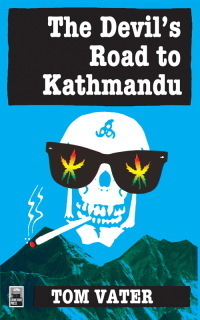 A bunch of hippies, a rattler of a bus and the adventure of a lifetime along freely open South Asian land borders in the mid 70s are the base ingredients of “The Devil’s Road to Kathmandu”, Tom Vater’s first novel, originally released in 2006 and newly available now. Add and blend in a scary amount of drug abuse, corrupted border officials and a drug smuggling deal gone bad in the Pakistani mountains of the Swat valley, and you can complete this lethal Molotov cocktail of a book. To my knowledge, one of the few pulp adventures set in the Hippy Trail’s background, if not the first.
A bunch of hippies, a rattler of a bus and the adventure of a lifetime along freely open South Asian land borders in the mid 70s are the base ingredients of “The Devil’s Road to Kathmandu”, Tom Vater’s first novel, originally released in 2006 and newly available now. Add and blend in a scary amount of drug abuse, corrupted border officials and a drug smuggling deal gone bad in the Pakistani mountains of the Swat valley, and you can complete this lethal Molotov cocktail of a book. To my knowledge, one of the few pulp adventures set in the Hippy Trail’s background, if not the first.
The plot is precisely knit as a handmade, intricate Kashmiri carpet: the events unfold between a lysergic trippin’ past in 1976 and present day Kathmandu, where the surviving units of the wild bunch have reunited to piece together the last fragments of a puzzle scattered across much more than just time.
When a mysterious email lands in Dan’s inbox, a story which may have stayed buried under the Himalayan snows comes back to life, rippin’ and taking hostages like a terrorist attack. And it is rendezvous’ time, adding young Robbie, Dan’s son who finds himself in Kathmandu at the same time, looking for his own version of Asia. The plethora of gangsters, guns, women and holy men coming in the middle will just help to make it a dangerous one.
Tom Vater, travel writer and expert of the region, mixes a fondness for Asian travel with a deep appreciation for noir and crime fiction, painting a vivid portrait of a Thamel-haunted Kathmandu and its dwellers. If you ever visited the Nepali capital, you may easily get lost in the abounding topographic details scattered all over the novel. Its characters get slowly uncovered, pieced together with 25 years old tape, showing that for some not much has changed between now and then. Inevitably, the gathering becomes housekeeping time for restless souls and bank accounts, respectively.
“The Devil’s Road to Kathmandu” successfully depicts an odd world of lawless Western abuse against the magical backdrop of Asia’s southern roads; at the end, it is difficult to discern who plays worst between strung-out travelers and strange locals. One thing is certain, tough: it is a ride you won’t likely put down until this book is finished. A noteworthy addition to your travel literature.
Original article can be found here: The Devil’s Road to Kathmandu – book review
November 5, 2012
What is the hardest thing about living abroad?
Vagablogging :: Rolf Potts Vagabonding Blog

Girl getting knocked out by boxing glove. Photo: B. Garrett / Flickr
To your friends and family back home, it might seem like you’re living an endless vacation. Especially if you only share cool photos on Facebook (I’ve been guilty of that). But long-term expats know better. The challenges of residing in a foreign country are very real. There was a discussion thread on Quora titled, What is the hardest thing about living abroad?
Looking back on that made me reflect. Here are some things from my list:
Career/Personal Stagnation — There’s nothing wrong with drifting for a while; I have friends who are still happily directionless up to now. But for me, at around the 5-year mark I felt like I’d hit the limit of living in Asia. My biggest fear was that I’d end up still being an ESL English teacher in Taiwan at age 50. At a certain point, that kind of expat life felt like less of an escape and more like a trap.
Disconnect – Although I made loads of acquaintances among the locals in China and Taiwan, there were only a few I truly considered friends. I noticed that many locals would meet me separately from their same-race friends. This kind of segregation saddened me. Meanwhile, foreign friends I grew close to would leave, and it was hard to maintain the bond once they were gone. On the flip side, I felt disconnected from family and friends back home.
Immigration problems — There is not enough time or space for me to rant properly on how much I hated dealing with visas. Worrying about my legal status and getting deported was a humbling experience. Always the foreigner, never the citizen.
On a related note, there was an article in The Economist titled, Foreigners in China: To flee or not to flee? The burden is multiplied if you living in a country with murky legal environment and non-democratic government.
None of this should take away from the experience. Getting to live outside my own culture had an overall positive effect on my life.
What were your biggest obstacles when living abroad? Please share your thoughts in the comments.
Original article can be found here: What is the hardest thing about living abroad?
November 3, 2012
Vagablogging Field Reports: chasing altitude in the Cordillara Blanca, Peru
Vagablogging :: Rolf Potts Vagabonding Blog
Cost: $20 a day
What’s the strangest thing you’ve seen recently?
In and around Huaraz it’s common to see elderly Quechua woman ambling along paths, bent backed, hauling heavy loads in carrying cloths called K’eperina. Garbed in colourful attire, bowler hats perched upon their heads, they doggedly trek along steep high altitude slopes that would have fit twenty somethings huffing and puffing. One of these woman I remember particularly well, because she looked positively ancient. She hopped into a colectivo van I was taking into Huraz and plopped her K’eperina down and took a seat. She was a tiny desiccated figure, with dark leathery skin and an expressive face full of crevices like the surrounding glacier ridden landscape. When she croaked in the local Quechua dialect she revealed a few crooked, yellowed and lonely teeth. Despite the heat she was heavily bundled in traditional attire and I couldn’t help but make the ghastly comparison with one of the wrapped Incan mummies I had seen recently in a museum in Lima. But alive she was, and after she got out of the the van she hoisted her goods over her shoulders and started shuffling determinedly onward to her destination.
Describe a typical day
My main purpose for coming to Huaraz was to introduce myself to mountaineering in a comfortable, inexpensive, yet beautiful part of the world. The city is in close proximity to the Cordillera Blanca, which contains numerous ‘easy’ peaks over 5500 meters. Acclimatisation is crucial so after relaxing for a day in Huaraz I joined a group and started traipsing along the popular Santa Cruz trail. We passed tiny Quechuan villages, impossibly turquoise glacial lakes and burro (donkey) trains as we walked along trails surrounded by immense spires clothed in pure white glaciers. Back in Huaraz I spent my time heading to different mountaineering guide agencies and bargaining for a good price, whilst trying to figure out if I trusted the guide with my life. I have quite a high opinion of living, so I did not choose lightly.
Describe an interesting conversation you’ve had with a local
During a mountaineering trip to Mount Pisco 8 got to know Juan, the lead guide, a little. He’s 33 years old and has a 4 year old son with a woman who he is now separated from. The previous year he had moved away from Huaraz and worked in the Peruvian Amazon for a logging company in order to earn more money. I was disappointed to hear that he makes more money as part of an enterprise that destroys the environment rather than one that serves to admire it. Despite the financial advantages the call of Juan’s mountainous home was too strong and he returned to guiding after one logging season. With a child to support times can be tough and he may have to return to the jungle, however for now he has chosen to do something he loves. Of course Juan is one of the lucky few who have a choice in this part of the world. Many Quechua live in crippling poverty and must do what ever they can to survive.
What do you like about where you are? Dislike?
I achieved my goal of climbing an Andean mountain. Mount Pisco’s reaches 5750 metres and its summit provides appropriately spectacular views. It’s an easy five thousander, in that it’s essentially a long, steep, high altitude walk with crampons. For most the journey is between 10 to 12 hours to the summit and back down to base camp. My two English companions Luke and James, and our two guides Juan and Pepe started walking at 12.30 am. With no light pollution to speak of stars littered the sky, providing a dim light that made ominous shadows out of the Cordilleras towering peaks. After several hours the sun began to rise bringing out subtle blue and orange hues and turning the dark figures into stunning, white, natural edifices.
It was tough going at times, particularly for the English lads, who weren’t as accustomed to altitude as myself. Luke had a splitting headache and was almost constantly out of breath as we climbed higher. He remarked in anguish several times that ‘it was sooooo steep’. Yep, its a mountain mate, I thought, but I bit my tongue. Despite his obvious discomfort it was inspiring to see him push on.
Upon reaching the summit a grand vista was revealed. The physical toll, sense of achievement and impossibly picturesque terrain affected me deeply. I thrust my ice axe to the heavens and single tear rolled down my cheek…..not really….but I was elated.It was a special moment.
My one complaint with the Cordillera Blanca is the filthy campsites. At times I was forced to engage in a dangerous game of tippy toes, to avoid the sea of local shit (animal and human) waiting to be stepped on. As for Huaraz city itself, it isn’t as remotely attractive as its lofty surrounds. That’s not to say it’s a horrible place, but upon returning from the mountains I felt a strong urge to escape the noisy human centric world and return to the wilderness. The city has some quality eating digs and the locals are extremely amiable, however like any city it has it’s fair share of problems. Stray dogs, many in poor health, roam the streets, obnoxious taxi drivers honk their horns constantly and it’s not uncommon to see deformed beggars sitting on sidewalks with palms upturned.
Describe a challenge you faced
It was difficult for me not to become jaded after spending some time in Huaraz after coming off my mountain high. I kept having to remind myself that most people are doing the best they can and although cities can be truly revolting, beauty exists in the people that inhabit concrete edifices too.
What new lesson did you learn?
It’s essential to learn from experienced guides and wilderness experts to go into the wild successfully. Despite Pisco being and ‘easy’ Andean peak there is not way I would’ve made it to the top of Pisco without the Quechuan guides. Now that I’ve had a taste of an icy world that I can only ever be a visitor to, I find myself wanting more. I’ll visit again.
Where to next?
The Galapagos Islands
Original article can be found here: Vagablogging Field Reports: chasing altitude in the Cordillara Blanca, Peru
November 2, 2012
Even a stroll in one’s own neighborhood can reveal infinite diversity
Vagablogging :: Rolf Potts Vagabonding Blog
“The sudden change of ambiance in a street within the space of a few meters; the evident division of a city into zones of distinct psychic atmospheres; the path of least resistance which is automatically followed in aimless strolls (and which has no relation to the physical contour of the ground); the appealing or repelling character of certain places — all this seems to be neglected. In any case it is never envisaged as depending on causes that can be uncovered by careful analysis turned to account. People are quite aware that some neighborhoods are sad and others pleasant. But they generally simply assume elegant streets cause a feeling of satisfaction and that poor street are depressing, and let it go at that. In fact, the variety of possible combinations of ambiances, analogous to the blending of pure chemicals in an infinite number of mixtures, gives rise to feelings as differentiated and complex as any other form of spectacle can evoke. The slightest demystified investigation reveals that the qualitatively or quantitatively different influences of diverse urban decors cannot be determined solely on the basis of the era or architectural style, much less on the basis of housing conditions.”
–Guy-Ernest Debord, “Introduction to a Critique of Urban Geography,” Les Lèvres Nues #6 (1955)
Original article can be found here: Even a stroll in one’s own neighborhood can reveal infinite diversity
Rolf Potts's Blog
- Rolf Potts's profile
- 323 followers




